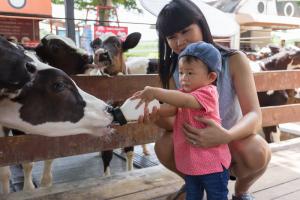Young Learners and Vocabulary Learning

In order to possess an organized, highly-structured system for storing and retrieving words, the foundations need to be there for young children. Categories are a primary way the brain organizes vocabulary words.
Young children first learn words by hearing them used orally in their daily environment. For example, if there is a dog in the home, the child experiences the fur and four legs and wagging tail of the dog. They are able to point to the dog on command before they are able to say the word dog (or a close-sounding word, like “goggy”). The child has laid down a neurological concept of that word, and what it means.
If the child sees a cow for the first time, they are likely to call it a dog, because it has four legs and fur and a tail. The caregiver gently corrects and explains that a cow is also an “animal,” but the cow is different. Cows are larger, give milk and live on farms. This gentle correcting literally helps rewire the child’s brain.

Now dog and cow are related under a hierarchy of “animal” and new animals will be stored in connection to cow and dog. Subcategories are built – farm animals, ocean animals, birds, and reptiles. When this initial storage system is deeply established, children can easily add new words as they move through the schools years.
When using InferCabulary, or any vocabulary building program, we highly recommend incorporating discussion about category/subcategory labels for nouns.
Definition for a noun
_____ is a kind of (category) that (what it does) and looks like (description)
Definition for an adjective/adverb
________ describes a person/place/action that _________
Using this framework for definitions provides a good foundation for organization that we may take for granted. We want young children’s “neural dresser drawers” to be organized in a way that words will be easily retrieved as they get older.
Parents and early-caregivers can have an enormous impact on this simply by talking through (or even better, drawing) categories while engaged in word play and discussion.

